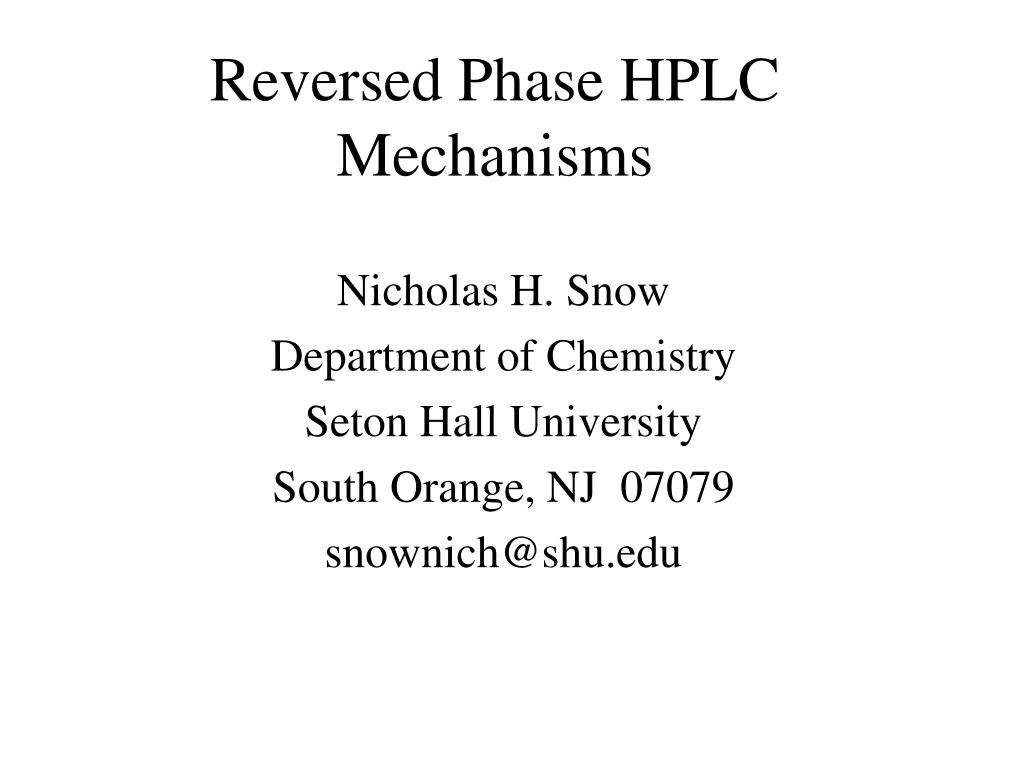
If mass spectrometric detection is being used, then the use of a volatile buffer is essential. Remember, if a UV-based detector is being used, take note of the UV cutoff of the buffer. Buffer concentrations will normally be in the range 25–100 mM, and the effect of the buffer concentration should be investigated as part of the method development process because both retention and selectivity of the separation can be affected by changes in the type and concentration of the buffer. At concentrations greater than 50 mM there is a risk of the salt being precipitated in the presence of high organic concentrations (that is, >60% acetonitrile). Below 10 mM, buffers have very little buffering capacity and will not be able to resist changes in pH. The buffer concentration must be adequate, but not excessive. Table II: Properties of various common HPLC buffersĪ particular buffer is only reliable within 1 pH unit on either side of its p K a and, therefore, the choice of buffer will be heavily influenced by the required eluent pH. For complex separations (acids, bases, or mixtures of both) more careful pH optimization may be required and the use of a buffered mobile phase will be required. This often improves method robustness, but requires selectivity to be optimized by other means such as stationary phase, organic modifier type, and eluotropic strength, which limits the extent to which separations can be optimized. The pH is typically altered using trifluoroacetic acid, formic acid, ammonia, or ammonium hydroxide. Modern approaches to working with ionizable analytes often involve working at pH extremes to avoid variations in selectivity because of changes in the mobile-phase pH. Table I: Solvochromatic and physicochemical properties of common solvents used in reversed-phase HPLC Eluent pH values at or near to the analyte p K a will risk robustness issues as small changes in pH will result in relatively large changes in analyte retention. In this case, the relative retention times of analytes (selectivity) can be altered by changing the eluent pH until a satisfactory separation can be obtained. The opposite would be true if the analyte were basic. If the analyte contains an acidic functional group with p K a equal to 4.0, retention at pH 2.0 will be significantly greater because the analyte will be almost wholly nonionized (less polar) and at pH 6.0 retention will be significantly lower because the functional group will be almost wholly ionized (more polar). The eluent pH can be used to influence the degree of analyte ionization and as such its polarity, which alters analyte retention based on the proximity of eluent pH to the p K a (partial acid dissociation constant) of the analyte functional groups. Solvent mixtures may be isocratic (fixed ratio of organic to aqueous components), or the elutropic strength can be continuously increased during the experiment by increasing the amount of organic modifier in a gradient elution experiment.įor ionizable analytes, the extent of ionization will alter the polarity of the analyte molecule as well as its ability to interact with solvent and charged species within the bonded phase or stationary-phase surface. Acetonitrile is often used because of its low UV cutoff, lower viscosity (methanol forms highly viscous mixtures with water at certain concentrations), and higher boiling point. Different binary and ternary mixtures of these solvents with water can produce a wide range of selectivity options during method development. Acetonitrile has a higher dipole moment and is more predominantly acidic (hydrogen bond donor) whereas methanol has a lower dipole moment, is more predominantly basic (hydrogen bond acceptor), and has a slightly lower elution strength.

The choice of organic modifier will affect the selectivity of the separation because methanol and acetonitrile have different solvochromatic properties, the most important of which are dipole moment, acidity, and basicity. In reversed-phase separations, the eluent tends to be more polar (more hydrophilic) than the stationary-phase surface and is typically a mixture of water and an organic solvent, usually methanol or acetonitrile.


 0 kommentar(er)
0 kommentar(er)
